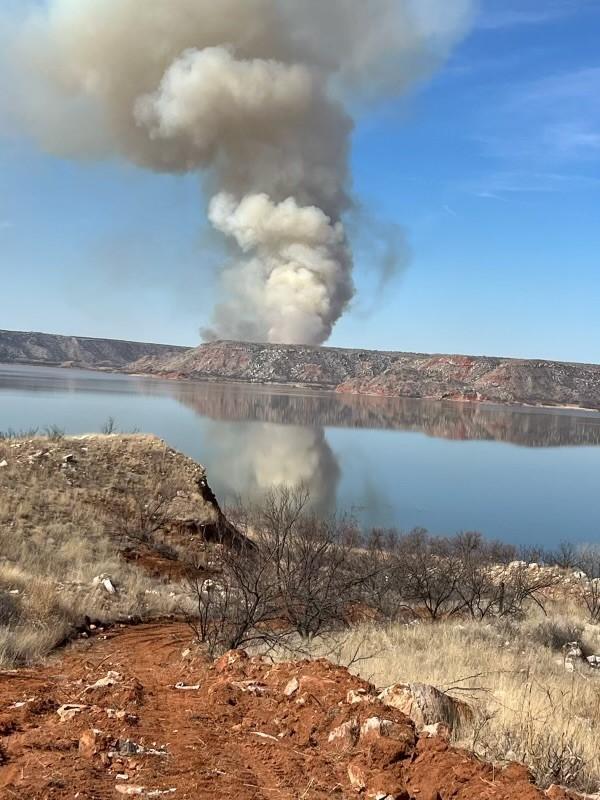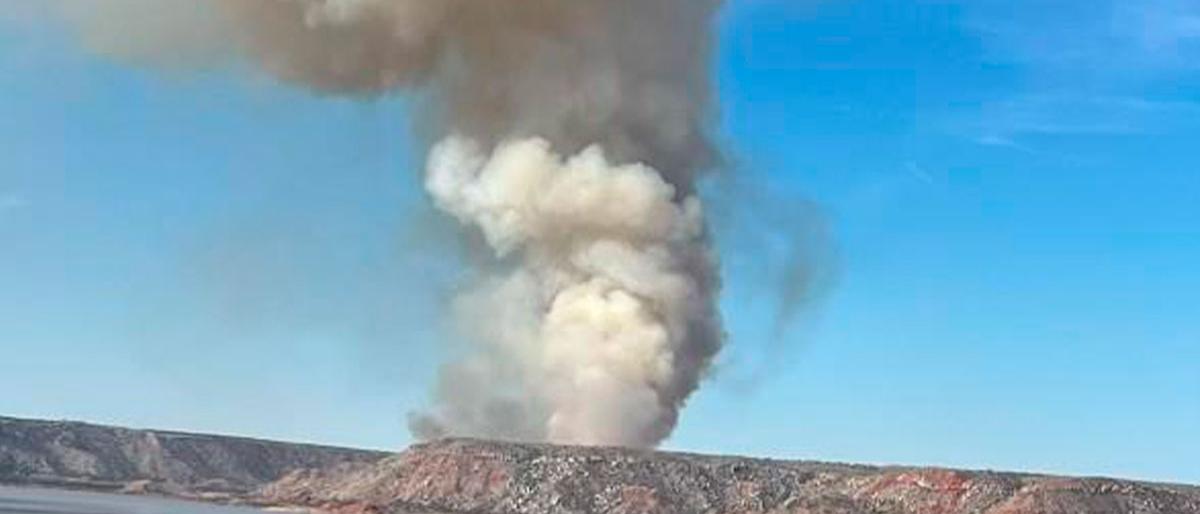Forest fires forced nuclear weapons factory to close
Was only kilometers from the facility
Christina Nordh
Published 2024-03-01 09.07

Smoke from the Windy deuce fire can be seen far and wide in Hutchinson county, Texas. (Photo taken at Lake Meredith.) Photo: Inciweb.Nwcg.Gov
The fire in the countryside threatened the nuclear weapons facility.
Then they were forced to pause all operations.
The Pantex facility is located northeast of Amarillo in the US state of Texas. On Tuesday, non-essential personnel were forced to evacuate due to the forest fire raging nearby.
The personnel who remained behind began to build a barrier to try to stop the fire before it reached the nuclear facility.
On Wednesday, they returned to normal production, writes the Bulletin of the Atomic Scientists.
The roughly 360 square kilometer Windy deuce fire has burned between six and eight kilometers from the nuclear weapons facility.
Another forest fire near
But it is not the only threat.
The Smokehouse creek fire is located further northeast of Pantex, it is now the second largest fire in Texas history, it has so far covered more than 3,439 square kilometers and is not yet contained.
The most serious fire threats are February–April (winter season) and August–October (summer season).
Fires like Smokhouse creek are caused by high winds that dry out potential fuel on the ground. Once a fire starts, it spreads faster and over a larger area.
Last spring, rainfall amounts were above average, which meant that grasses and shrubs flourished. Now during the winter the vegetation is fuel for the fires.
Although it is unclear how the Smokehouse Creek fire started, climate change is making explosive wildfires more likely in the future – with serious consequences for the US nuclear weapons program, the paper writes.
Assembling nuclear weapons
The Pantex facility is the United States' primary facility for the assembly and disassembly of nuclear weapons. It is one of six facilities in the US National nuclear security administration's nuclear security enterprise.
In addition to non-radioactive toxic and explosive chemicals, the facility also handles large quantities of uranium, plutonium and tritium.
If the facility were to catch fire, the health and safety implications are enormous.
- I don't like to speculate about worst-case scenarios. The potential for danger, if a fire ever broke out at a site that has weapons that use nuclear materials, is quite high, said Nickolas Roth, director of nuclear material safety at the Nuclear threat initiative.

Inga kommentarer:
Skicka en kommentar